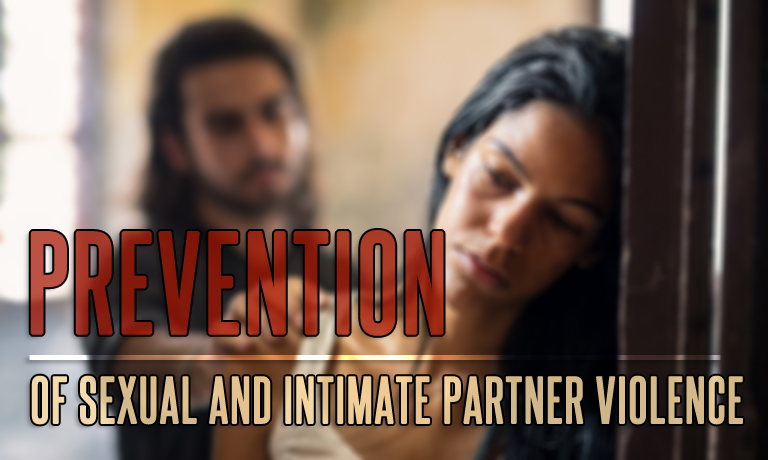Sexual violence and intimate partner violence are complex, multifaceted issues that affect all sectors of our communities. Preventing sexual violence and/or intimate partner violence requires a comprehensive approach involving many individuals, organizations, and sectors. We know from our experience with other public health issues that primary prevention strategies that take place before violence occurs can work (CDC, 2004).
An effective, comprehensive program to prevent sexual violence and/or intimate partner violence takes a multitude of approaches, one of which is training professionals to engage in sexual violence prevention and/or intimate partner prevention. This Guide describes how to develop, implement, and evaluate a training process, taking into account your available level of resources. Additionally, this training process emphasizes turning awareness and knowledge into mastered skills and practices to prevent sexual violence and/or intimate partner violence by:
Teaching based on organizational context.
- Providing opportunities for skill development through
- Participatory learning.
- Following up to assess progress and determine level of mastery.
The Guide is intended for use by state-level entities providing training to community based organizations (CBOs) or to other state-level entities as well as for CBOs providing training within their own organizations or to other professionals in their communities. The Guide can help plan, deliver, and evaluate trainings whether you initiate the trainings yourself or are asked by others to provide trainings.
Highlights of the Planning Guide’s Content
The Guide’s content is divided into three stages:
■ Start A Training Plan: The Basic Elements
■ Refine and Tailor Your Training Plans
■ Prepare for Evaluation and Follow-up
When you start developing your training plan, the first step is to state clearly why you want or need to do training in the first place and then develop and tailor trainings in partnership with the professionals you plan to train to address the identified needs or problems. The issues, needs, or problems you wish to address will shape the goals and desired outcomes of your training plan. Your goals and outcomes will describe the changes you expect to see in the professionals being trained as you try to increase both knowledge and skills in order to prevent sexual violence and/or intimate partner violence.
Ideally, everyone has a role in preventing sexual and/or intimate partner violence, but training takes a significant investment of time and resources. The best use of your resources will be to start by training those who seem ready or with whom you already have relationships. You may also strategically want to train those you believe can be change agents or who show existing organizational support for your primary prevention efforts.
Once you have decided whom you want to train, invite some of those professionals to help you shape the content and delivery of your trainings. This early involvement by a small group can help ensure your plans are relevant for all your participants. Invite professionals from different cultures, organizations, and communities, as well as from different generations, when appropriate. Participants can help you develop and deliver trainings that are culturally competent.
To make trainings relevant, you will need to consider both the organizational context in which professionals work as well as their individual readiness and level of knowledge. Understanding organizational context will help you address ways professionals can better apply their new skills. Factoring in their readiness helps address learning needs, beliefs about challenges and barriers related to sexual violence and/or intimate partner violence, and professionals’ reasons for participating in trainings. Regardless of individual and organizational issues, your trainings will be grounded in the same core content, which will include understanding what constitutes sexual and intimate partner violence, strategies and skills that support preventing sexual and intimate partner violence from occurring in the first place (primary prevention), and what increases risk and protects against perpetration and victimization. It is also important to include in your trainings how to respond to disclosures of abuse.

